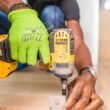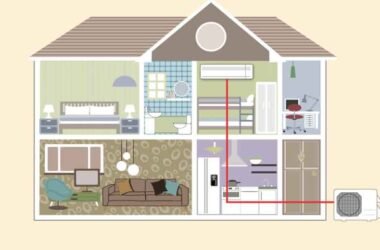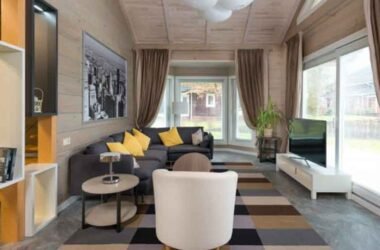What’s the first thing you do after a long day? For most, it’s slipping off their shoes and heading straight for the kitchen or bathroom. That familiar pause is more than habit. It’s the beginning of recovery, the moment your home starts doing its job. In Baton Rouge, where summer heat can cling to your skin well into the evening, that job better involve more than looks. A good home needs to work with you, not just for you.
Wellness architecture is about exactly that. It’s design that supports your mind and body without demanding attention. Not just pretty finishes or trendy furniture. Think layout, lighting, air flow, and how your space makes you feel. As people have spent more time indoors and grown more aware of how the environment affects well-being, homes have taken on a new role. They’re not just where we live. They’re where we rest, repair, and recharge.
In this blog, we will share how wellness architecture appears in everyday homes, why it matters, and simple ways to add its benefits to your space without major renovations or high costs.
The House as a Healing Space
Wellness architecture means designing homes that support daily life, using elements like natural light, open space, and smart layouts to reduce stress and boost well-being.
Bathrooms deserve special attention. For most people, it’s the one room where they can shut the door and be left alone for five minutes. Turning a chaotic or outdated bathroom into a quiet place of restoration is one of the smartest design moves you can make. This is where functional changes make a real difference. Think better ventilation, soft LED lighting, and barrier-free walk-in showers. And yes, sometimes that means ditching the old unit altogether and calling a reliable Baton Rouge shower replacement company. These professionals understand the local climate and can guide you toward materials that resist mold, stay cool, and age well.
Sound also plays a role. Acoustic insulation isn’t glamorous, but if your teenager’s playlist leaks through your bedroom wall, you’ll know why it matters. A wellness-oriented home thinks about sound flow as much as air or water.
The Pandemic’s Lasting Design Wake-Up Call
The design world has always flirted with wellness. But the pandemic turned that flirtation into a long-term relationship. Suddenly, homes became offices, gyms, schools, and stress bunkers—all at once. Designers had to think differently. And homeowners did, too.
People started noticing what wasn’t working. Not enough natural light. Too much echo in the living room. No quiet corner to breathe. Bedrooms felt like storage units with a mattress. Living rooms had nowhere comfortable to actually live in. The conversation changed. It wasn’t just about what looks good in a photo. It was about what feels good on a Monday morning when you’re running late and already exhausted.
Since then, builders and remodelers have added wellness to the top of their planning checklists. From installing anti-microbial surfaces in kitchens to using low-VOC paint, choices once considered “eco-friendly” are now part of health-first home design. In other words, sustainability and wellness are finally holding hands.
Materials Matter More Than Ever
You wouldn’t put plastic sheets on your skin, so why live surrounded by materials that off-gas chemicals? This is where things get real. Materials influence air quality, thermal comfort, and even how your home smells. And yes, smell affects your brain, memory, and stress levels.
Switching to hardwood floors, stone counters, or even cork panels might sound like style choices, but they’re often about breathing easier. Literally. Linoleum and composite wood often contain formaldehyde, which can irritate your lungs. Even some rugs are guilty of releasing sneaky toxins.
Modern wellness architecture leans on natural or recycled materials. Bamboo flooring, reclaimed wood beams, clay walls, and even lime-based paints are making a comeback. These may seem like old-school trends, but that’s the point.
Personalization That Supports Real Life
This isn’t about making your home look like a spa brochure. It’s about honest personalization. What works for a family of five in Baton Rouge isn’t the same as what a retired couple in Seattle might need. Wellness design adapts to the people living in the space, not the other way around.
For example, a busy household might benefit from zoning—separating high-traffic areas from quiet ones. An open kitchen that flows into a loud living room might not be ideal for someone who works from home. In that case, a movable wall, folding screen, or even smart acoustic panels could solve the problem.
Fitness-minded folks often add yoga nooks or wall-mounted foldaway benches. These aren’t just design flourishes. They’re tools to make it easier to stay active. A parent with young kids might want materials that are easy to clean and safe for crawling toddlers. A teenager might want a space that gives them privacy without total disconnection.
The core idea? You don’t just decorate your home. You shape it around your habits. And then let it evolve as your habits change.
The Bigger Picture: Homes as Preventive Healthcare
Here’s the twist. When we talk about wellness design, we’re really talking about preventive healthcare. Your home won’t give you a check-up, but it can either make your health better or worse over time.
Air pollution isn’t just outside. Indoor air can be up to five times worse, thanks to dust, poor ventilation, and chemical-laced cleaners. The way a home is built or updated can reduce those risks. And the benefits stack up. Better sleep. Fewer colds. Lower anxiety.
The shift toward wellness homes isn’t just a design trend. It’s an answer to a public health problem that’s been hiding in plain sight. And while not everyone can afford a total renovation, the good news is that many changes are within reach.
You can open your blinds first thing in the morning to help reset your internal clock. You can swap out synthetic scents for essential oils. You can even move your furniture to create better movement flow.
The most important change might be this: thinking of your home not just as a container for your life, but as a partner in your well-being. Once you see it that way, the idea of replacing an old shower or updating your windows stops feeling like a splurge. It becomes a form of self-care.
Because at the end of the day, your home is either building you up—or slowly wearing you down.
And that’s not just architecture. That’s your life.









